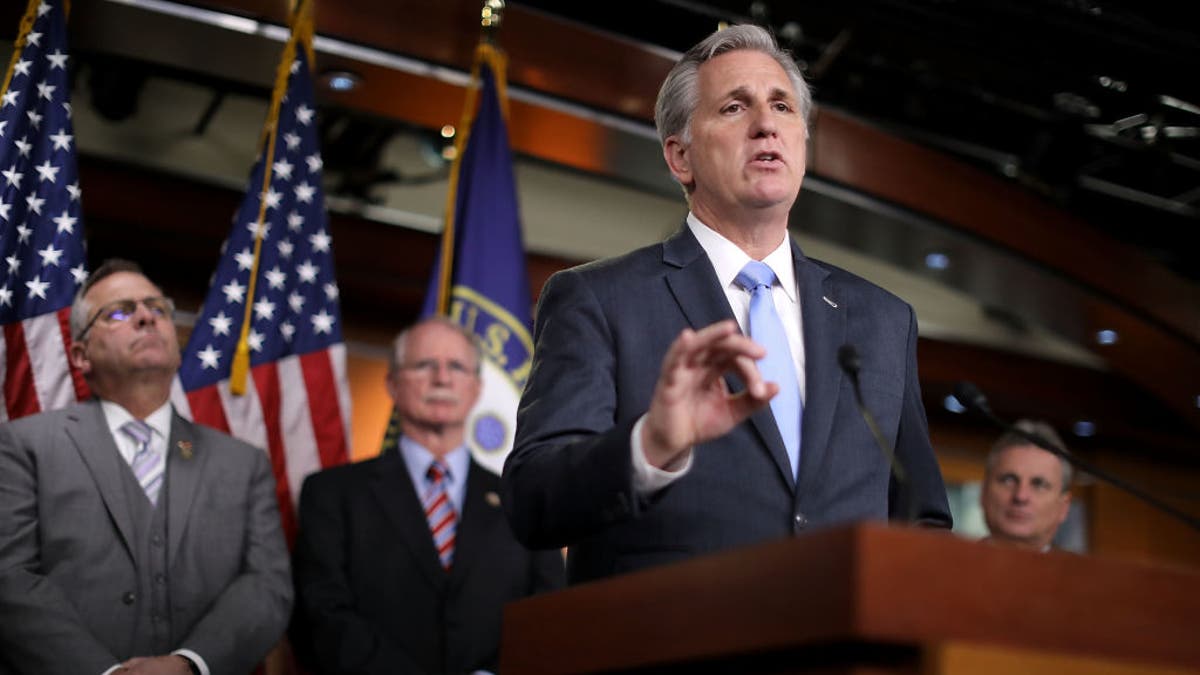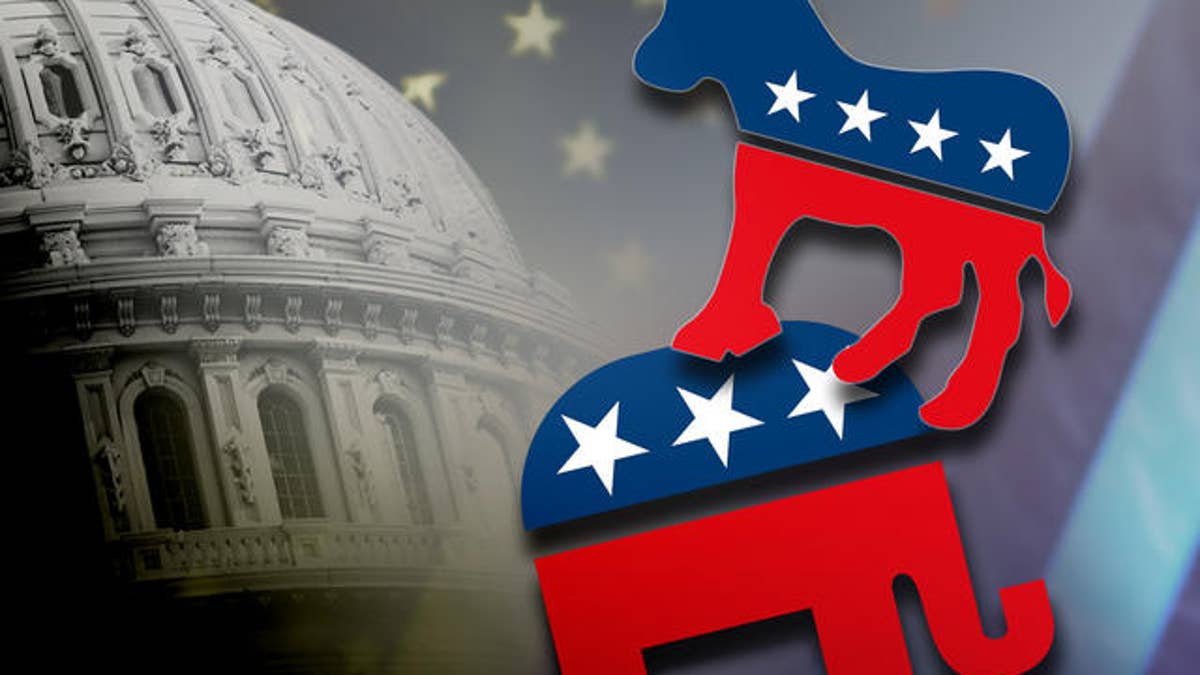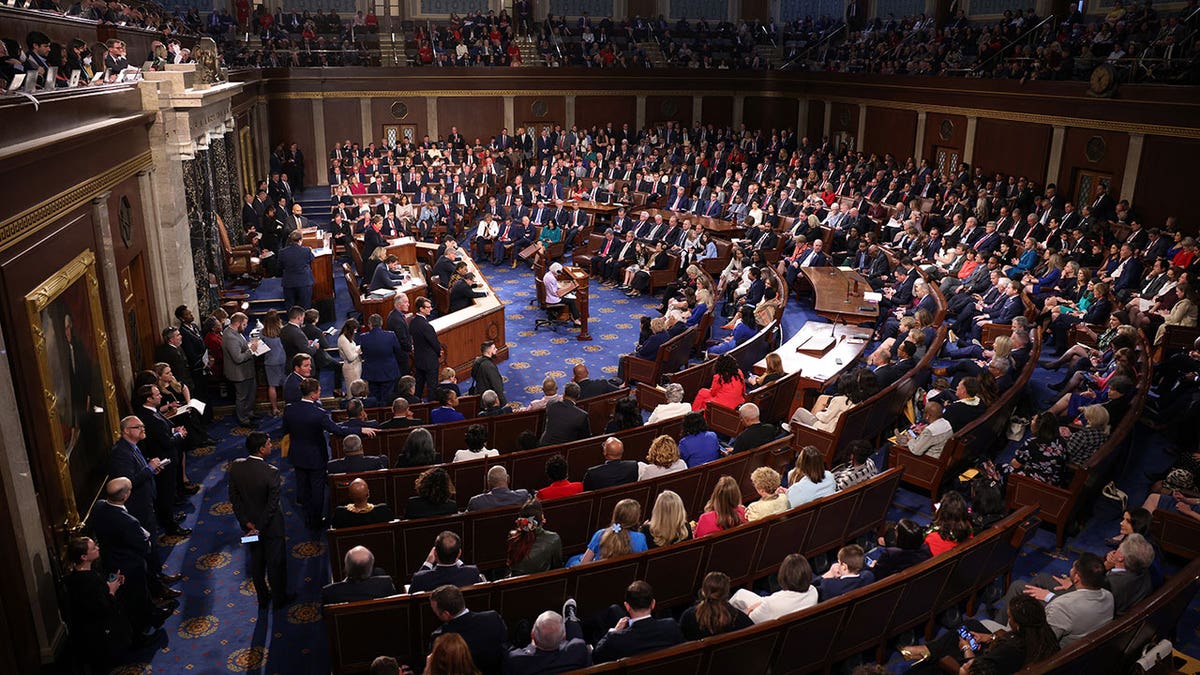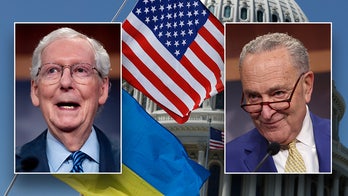Biden, McCarthy spar over possible debt ceiling shutdown
Princeton University political scientist Dr. Lauren Wright breaks down the debate over the debt ceiling between President Biden and Kevin McCarthy on 'Fox News Live.'
What Congress tackles or fails to accomplish often boils down to "the math."
But a potential crisis over the debt ceiling later this year could really be about the math, even more than other things that are about the math on Capitol Hill.
It’s also about the process.
Congress must raise the debt ceiling by early June or the nation may default. A failure to lift the debt limit could prompt the financial markets to spiral out of control, astronomically drive up the price of lending for homes and cars and spur a global economic meltdown.
Such a scenario would make the 2008 fiscal crisis resemble a couple of bounced checks.
DEMS PROPOSE 8.7% PAY RAISE FOR FEDERAL WORKERS TO MAKE UP FOR COVID, TRUMP
The debt ceiling is the amount of red ink the government is statutorily allowed to carry at any one time. The federal government is now about $31.4 trillion in the hole. Congress must pass a bill lifting or suspending the debt ceiling to avert the financial calamities mentioned above.
It sounds simple. But both the House and Senate must pass the same bill. Republicans hold a five-seat majority in the House. Democrats preside over a one-seat majority in the Senate. However, 60 votes are needed to terminate a filibuster in the Senate. A determined group of House Republicans is loath to support any measure that implicitly signals more debt. Even if this is debt the U.S. already accrued.

House Majority Leader Kevin McCarthy, R-Calif., speaks during a news conference after the House passed the STOP School Violence Act 407-10 at the U.S. Capitol Visitors Center March 14, 2018, in Washington, D.C. (Chip Somodevilla/Getty Images)
Around 85% of all federal spending goes toward popular entitlement programs like Medicare, Medicaid and Social Security — coupled with the Pentagon. Republicans generally support all four of those areas. Republicans insist they will only support a debt ceiling increase that addresses the root of the spending explosion. Yet GOPers don’t want to trim those programs. Thus, it’s hard to see what most House Republicans might support at all.
But not all Republicans are in that camp. Some GOPers are certainly grandstanding about the debt ceiling and excessive spending. But others understand the true financial peril the U.S. could face if Congress fails to act.
So what’s the math?
MCCONNELL TOSSES DEBT CEILING HOT POTATO TO BIDEN, MCCARTHY: ‘THAT’S WHERE A SOLUTION LIES’

The House and Senate are debating a bill on debt ceiling. (AP Photo/J. Scott Applewhite)
Two hundred and eighteen.
If all 434 members of the House vote — perhaps 435 following a Virginia special election later this month — the House needs 218 members to pass any bill on the debt ceiling or any other subject. The current breakdown in the House is 222 Republicans and 212 Democrats. This is where a coalition of Democrats and some Republicans may be able to come together and approve a plan to lift the debt ceiling.
Let’s examine the parliamentary possibilities. This spells out a series of avenues the House could take to grapple with the limit — provided they can get the math right.
House Speaker Kevin McCarthy, R-Calif., finally won the speaker’s election by ceding power to rank-and-file members. That means that lawmakers not named McCarthy are licensed to try to bring up issues that are important to them — not just the speaker. As such, McCarthy promised lawmakers an "open amendment process." That means members may attempt to put amendments important to them in play on various bills.
So imagine it’s May, and the debt ceiling deadline is looming. McCarthy decides that the House will consider a debt ceiling bill that addresses a significant number of cuts. However, lawmakers are allowed to offer amendments to that bill under McCarthy’s promise. Even amendments with which lawmakers may disagree. So even though most Republicans may not want to raise the debt ceiling, others may feel differently.

House Minority Leader Kevin McCarthy, R-Calif., answers questions during a press conference at the U.S. Capitol Jan. 9, 2020, in Washington, D.C. (Win McNamee/Getty Images)
What is good for the goose is good for the gander.
The key is designating the amendment to raise the debt ceiling "an amendment in the nature of a substitute." There are "regular" amendments which just alter a word or two. Or, an amendment may tackle a particular provision in a bill. But a "substitute amendment" is a different parliamentary animal. A substitute amendment yanks out the existing text of a bill and replaces it with brand new language, right down to the comma and semicolon. When the House considers amendments, it stops if it adopts a substitute amendment. That’s because the substitute approved by the House becomes the de facto bill.
It's possible the House could approve a debt ceiling bill by approving a substitute amendment. But the math requires a combination of some Republicans and lots of Democrats to come together to approve such a plan.
DEMOCRATS PUSH TO ELIMINATE THE DEBT CEILING, ALLOW UNLIMITED GOVERNMENT BORROWING
As for Republicans who didn’t want to address the debt ceiling? Remember that the agreement cut with McCarthy was for a more "open process" and more amendments. The House just took a staggering 56 roll call votes on an energy bill last week. That’s what McCarthy’s members wanted. The deal was for a more open process, but not just for a few members.
If the full House adopts a substitute amendment that lifts the debt ceiling, the gig is up.
Another option for the House is to go over the head of McCarthy with a "discharge petition." A discharge petition requires action if a hard figure of 218 members sign up to put a given measure on the floor — regardless of what committees or the leadership wants to do. In essence, a discharge petition "discharges" a bill from committee and plunks it on the floor.

Members of the House of Representatives participate in the vote for speaker on the first day of the 118th Congress in the House Chamber of the U.S. Capitol Building Jan. 3, 2023, in Washington, D.C. (Win McNamee/Getty Images)
It’s possible that those concerned about the debt ceiling could craft a bill to address the issue — and utilize a discharge petition to get a vote. A discharge petition would likely require a similar coalition of some Republicans and most Democrats to cross the "218" threshold.
Under current rules, the speaker has two days to bring up a successful discharge petition. The House requires a simple majority to approve the discharge petition and bring the debt ceiling bill to the floor.
But successful discharge petitions are rare. There have only been two successful discharge petitions in the House in the past 21 years — a 2002 campaign finance bill and a 2015 plan to reauthorize the Export-Import Bank.
That said, there is a way the House could block a discharge petition. It’s possible the House Rules Committee could craft a provision to modify or preempt how the House considers the discharge on the floor.
CONSERVATIVES SHARPEN THEIR SPEARS FOR HISTORIC DEBT CEILING FIGHT
Finally, there is a more exotic, "gamey" option to potentially address the debt ceiling in the House. It’s through a provision called "ordering the previous question."
A "previous question" or, "PQ," as it’s known on Capitol Hill, is essentially a "vote to have a vote."
The House usually conducts a "pre-debate" on most bills that come to the floor. That pre-debate establishes the ground rules for how the House will consider a given bill. This includes how much time the House may devote to a given item or even if amendments are in order. The vote in the House is to "order the previsions question" (e.g. – the vote to have a vote).

Rep. Hakeem Jeffries, D-N.Y., center talks to reporters with Rep. Pete Aguilar D-Calif., and Rep. Katherine Clark, D-Mass., after they were elected to House Democratic leadership for the 118th Congress at the U.S. Capitol Visitors Center Nov. 30, 2022, in Washington, D.C. (Chip Somodevilla/Getty Images)
However, the House hasn’t defeated a "previous question" vote since the 1980s. If the House rejects the "previous question" (thus, voting against having a subsequent vote), the minority can seize control of the floor for an hour. That’s where a group of Democrats and some Republicans may have an opportunity to offer an amendment to raise the debt ceiling. The House must vote to add that debt limit plan to the package as an amendment.
CLICK HERE TO GET THE FOX NEWS APP
It’s unclear what the policy proposals may look like to potentially address the debt ceiling. But dealing with the debt ceiling is certainly about the math. And because of GOP opposition to tangling with the debt ceiling, it’s certainly about the process.






